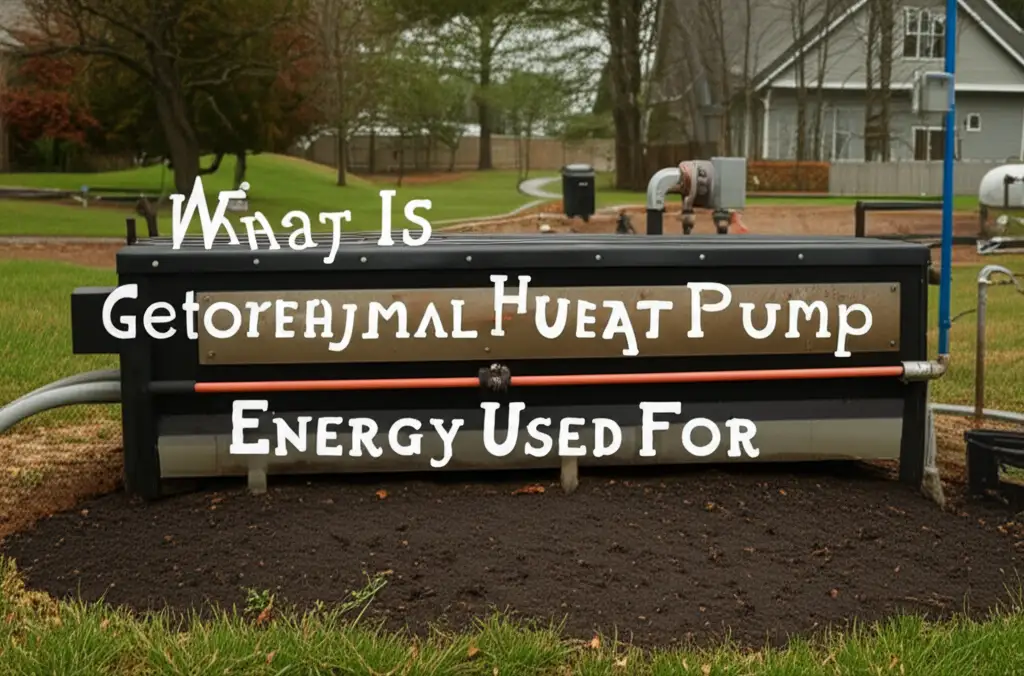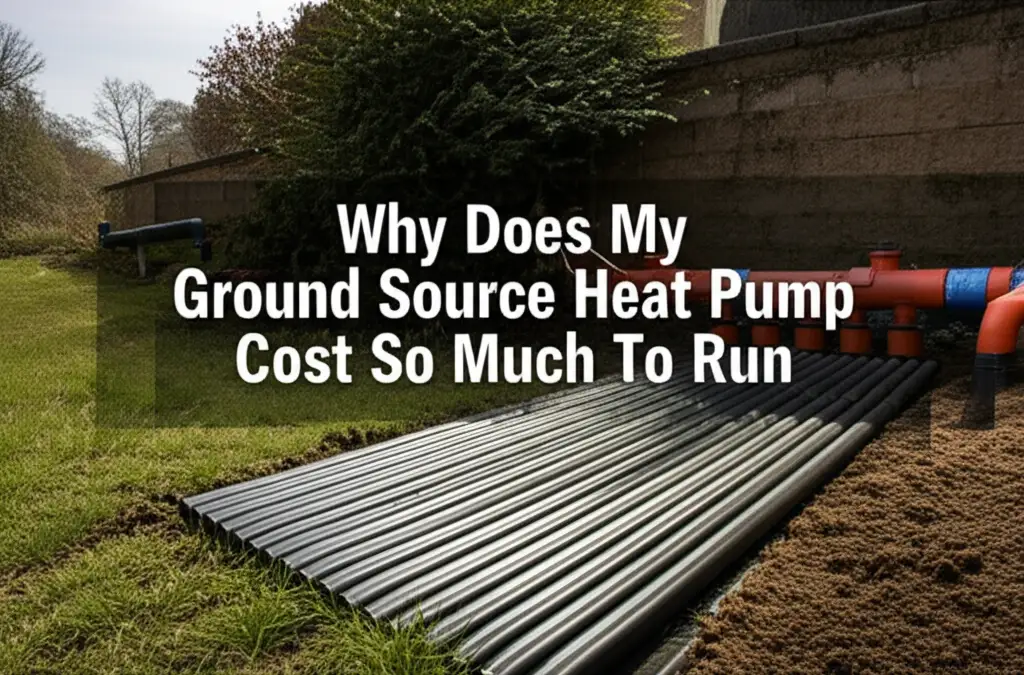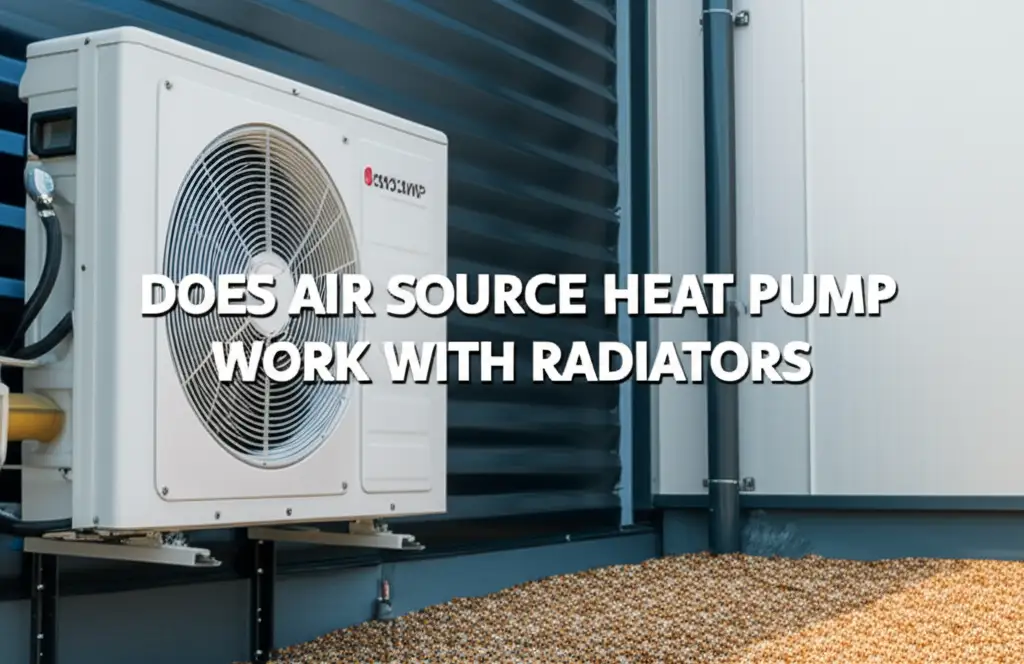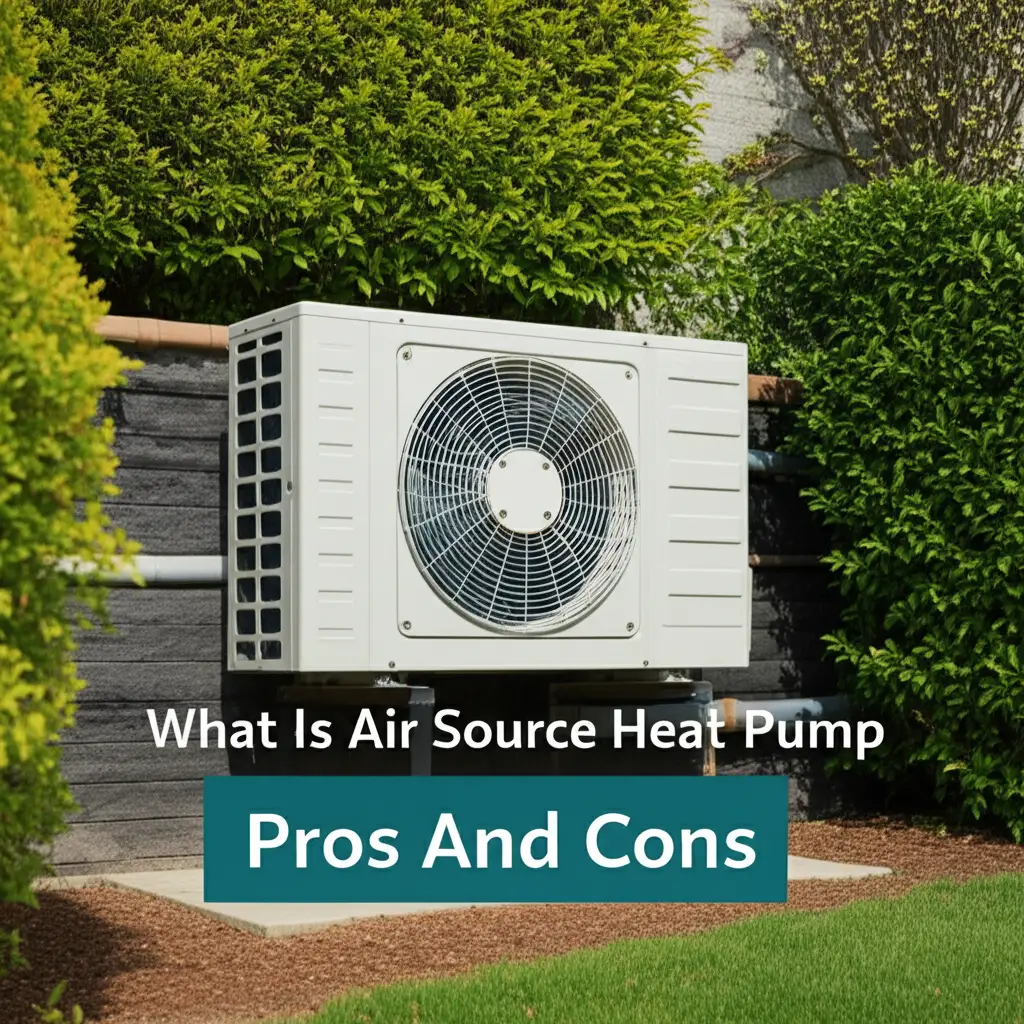· Katria Melrose · Renewable Energy · 15 min read
How Deep Do You Need To Drill For Ground Source Heat Pump
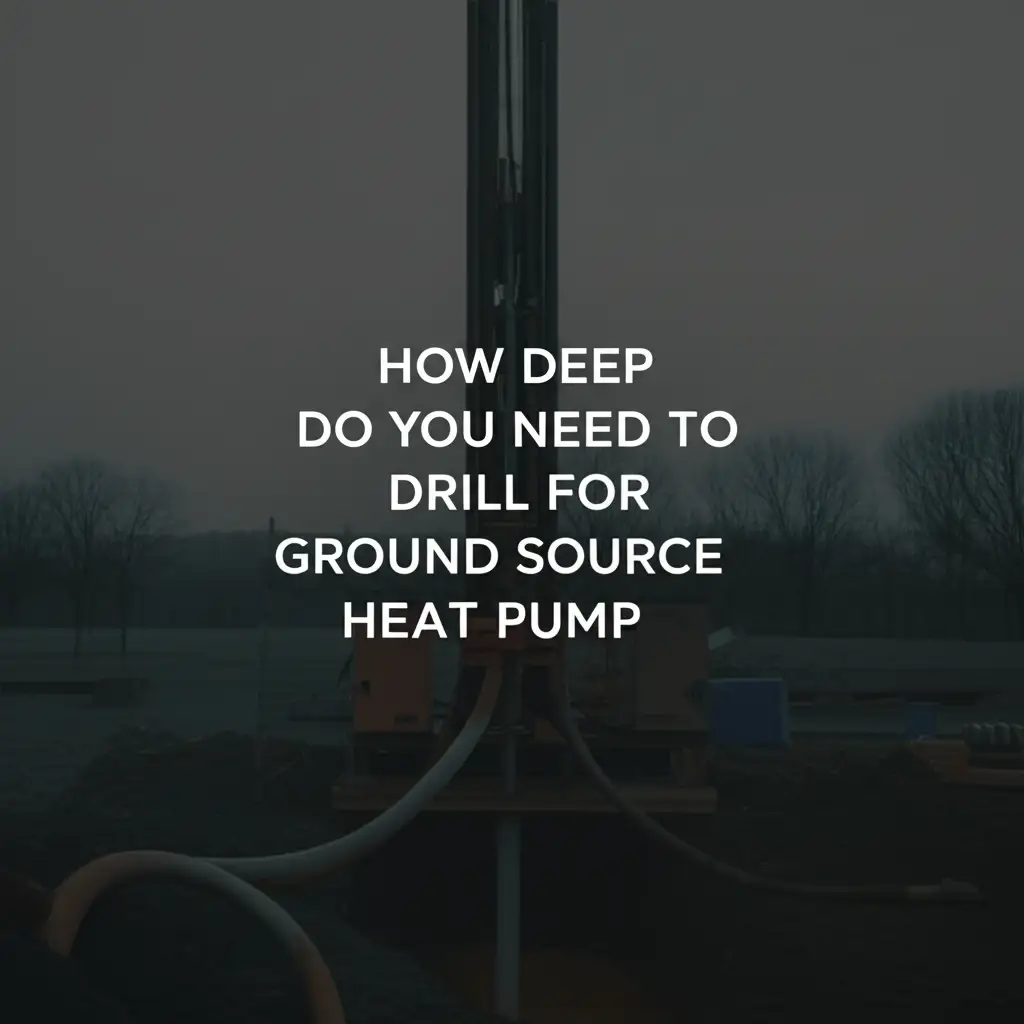
Ground Source Heat Pump Drilling: How Deep Is Enough?
Thinking about a ground source heat pump for your home? You are making a smart choice for energy efficiency. One of the most common questions people ask is, “How deep do you need to drill for ground source heat pump?” This question is important because drilling depth directly affects installation costs and system performance. Getting the right depth ensures your system works efficiently for many years.
I understand you want clear answers about this exciting heating and cooling technology. This article will explain the various factors that determine drilling depth for ground source heat pump systems. We will look at different system types, soil conditions, and your home’s energy needs. By the end, you will have a solid understanding of what goes into designing an effective geothermal system.
Takeaway
- Depth Varies Widely: Ground source heat pump drilling depth ranges from 100 to 500 feet per bore for vertical systems.
- Site Specific: Soil type, property size, and heating/cooling loads dictate the exact depth and number of boreholes.
- Professional Assessment is Key: A professional geothermal installer must conduct a site survey and energy audit.
- Initial Cost vs. Long-Term Savings: Deeper drilling can mean higher upfront costs, but it leads to greater efficiency and lower operating expenses.
- System Type Matters: Vertical loops need deeper drilling, while horizontal loops require more land area.
How deep do you need to drill for a ground source heat pump?
The required drilling depth for a ground source heat pump system typically ranges from 100 to 500 feet per borehole, varying significantly based on factors like your home’s heating and cooling demands, the available land area, and the specific geological conditions of your property. Each situation needs a custom design. Professionals assess these factors to determine the optimal depth for efficient heat exchange.
Understanding Ground Source Heat Pump Basics
Ground source heat pumps (GSHPs), also known as geothermal systems, use the stable temperature of the earth to provide heating and cooling. Below the surface, temperatures remain relatively constant year-round, typically between 45 and 75 degrees Fahrenheit. This stable temperature is a reliable energy source. The system uses a loop of pipes buried in the ground to exchange heat with the earth.
In winter, a fluid circulates through these pipes. It absorbs heat from the warmer ground and carries it back to the house. The heat pump then concentrates this heat and distributes it indoors. In summer, the process reverses. The system extracts heat from your home and transfers it to the cooler ground. This provides efficient cooling without burning fossil fuels. Is the new heat pump in your house also pumping up your electricity bills? explores the operational costs of heat pumps further.
This technology is highly efficient. It uses a small amount of electricity to move heat, rather than create it. This reduces energy consumption significantly compared to traditional HVAC systems. Understanding how it works helps explain why drilling depth is so critical. The depth determines how much heat can be effectively exchanged with the earth.
Factors Influencing Drilling Depth
Many elements combine to determine the ideal drilling depth for a ground source heat pump. No single depth fits every home or property. Each installation is a unique project. Understanding these factors helps you appreciate the complexity and precision involved in system design.
One major factor is your home’s heating and cooling load. This refers to how much energy your home needs to stay comfortable. A larger home or one with poor insulation will need more heat exchange. This often translates to more or deeper boreholes. The local climate also plays a role; colder regions require more robust systems.
Property size and layout are also critical. A small lot might only allow for vertical drilling. Larger properties could accommodate more expansive horizontal loops, which need less depth. Finally, the geology of your land is perhaps the most defining factor. Different soil types and rock formations conduct heat differently. This directly impacts how deep you need to drill for effective heat transfer.
Types of Ground Loop Systems
When considering how deep to drill for a ground source heat pump, it is important to understand the different types of ground loop systems. Each system has unique requirements for installation and space. Your choice of system will significantly influence the drilling depth and cost. The two main types are closed-loop and open-loop systems.
Closed-Loop Systems
Closed-loop systems are the most common type for residential use. They circulate a mixture of water and antifreeze through sealed, underground pipes. This fluid continuously exchanges heat with the earth. The fluid never comes into direct contact with the ground or groundwater. This makes them very environmentally friendly and low maintenance.
Closed-loop systems are further divided into vertical, horizontal, and pond/lake loops. Vertical loops involve drilling deep, narrow boreholes. Horizontal loops use trenches that are much shallower but require more land area. Pond/lake loops submerge coils in a body of water, which is ideal if you have a suitable water source. Each closed-loop type has specific depth requirements.
Open-Loop Systems
Open-loop systems, also known as “pump and dump” systems, use groundwater directly. They extract water from a well, transfer heat from or to it, and then discharge the water back into another well or a suitable discharge point. These systems are highly efficient because water is an excellent conductor of heat. They do not require extensive trenching or drilling for loops.
However, open-loop systems need an abundant and clean water source. They also require proper disposal methods for the water. Local regulations often control their use due to potential impacts on groundwater. While drilling is still involved for the water wells, it differs from the loop drilling of closed systems. The depth for open-loop systems depends on the water table and aquifer characteristics.
Vertical Ground Loops: The Deep Dive
Vertical ground loops are a popular choice when land space is limited. This system involves drilling multiple narrow boreholes deep into the earth. Each borehole typically ranges from 150 to 500 feet deep. The exact depth depends on several factors specific to your project. These deep holes maximize heat exchange in a small footprint.
Installers drill these holes using specialized equipment. They then insert U-shaped pipes into each borehole. The pipes are then grouted in place to ensure good thermal contact with the surrounding rock or soil. Grouting improves heat transfer efficiency. The number of boreholes depends on your home’s energy needs. A larger home requires more boreholes or greater depth.
The main benefit of vertical loops is their minimal land disturbance. You do not need a large yard to install one. This makes them suitable for urban and suburban properties. The cost per foot for drilling is higher than for horizontal systems. However, the compact footprint often outweighs this for many homeowners. These systems provide consistent performance because deep ground temperatures are very stable.
Horizontal Ground Loops: Spreading Out
Horizontal ground loops are another common type of ground source heat pump system. They are ideal for properties with ample land availability. Instead of deep vertical drilling, this system involves excavating trenches across your yard. These trenches are much shallower than vertical boreholes, typically 4 to 6 feet deep. However, they cover a much larger area.
There are two main configurations for horizontal loops: single-pass and Slinky coils. Single-pass loops involve laying straight pipes in parallel trenches. Slinky coils use pipes coiled in a serpentine pattern, allowing more pipe to be placed in a shorter trench. Slinky coils reduce the total trench length but still require significant land.
The total length of pipe required for a horizontal system can be extensive. This means you need a large, clear area for excavation. The main advantage of horizontal loops is their lower installation cost compared to vertical drilling. Trenching is generally less expensive per foot than drilling deep boreholes. However, the extensive excavation can disrupt your landscape more significantly. Horizontal systems rely on shallower ground temperatures, which can fluctuate more with seasonal changes.
Geological Considerations and Soil Types
The geology of your property plays a crucial role in determining the ideal drilling depth and overall design of your ground source heat pump system. Different soil and rock types have varying thermal conductivities. Thermal conductivity describes how well a material can transfer heat. This property directly impacts the efficiency of your geothermal system.
For instance, wet, dense clay and saturated sand are excellent conductors of heat. If your property has these soil types, you might not need to drill as deep or install as many boreholes. The ground can efficiently absorb and release heat with less pipe length. Conversely, dry, loose sand or gravel has lower thermal conductivity. This means you would need more pipe or deeper boreholes to achieve the same amount of heat exchange.
Rocky terrain also presents unique challenges. While some rock types are good conductors, drilling through solid rock is more difficult and expensive. It requires specialized drilling equipment and more time. A thorough geological survey is essential before any drilling begins. This survey identifies the specific soil and rock conditions on your site. This information guides the system designer in determining the optimal drilling depth and layout. Ignoring geological factors can lead to an inefficient or costly installation.
System Sizing and Energy Needs
Proper system sizing is paramount for the efficient operation of your ground source heat pump. This refers to matching the heat pump’s capacity and the ground loop’s length to your home’s specific heating and cooling demands. An undersized system will struggle to meet your needs, leading to discomfort and potentially higher auxiliary heating costs. An oversized system will cycle on and off too frequently, reducing efficiency and system lifespan.
To accurately size the system, a qualified professional performs a detailed load calculation. This calculation considers several factors about your home. These include the square footage, insulation levels, window types, and local climate data. It also accounts for the number of occupants and their comfort preferences. The goal is to determine the peak heating and cooling loads your home experiences.
Once the load is determined, the installer calculates the required ground loop length. This length, combined with the geological conductivity, dictates the necessary drilling depth and number of boreholes. A home with high energy demands will require a larger ground loop field. This could mean more boreholes, deeper boreholes, or a more extensive horizontal system. Proper sizing ensures your ground source heat pump operates effectively and provides optimal energy savings.
The Installation Process and What to Expect
Installing a ground source heat pump system is a significant project. It involves several key steps, starting long before any drilling begins. Knowing what to expect helps you prepare and understand the investment. The first step is always a detailed site assessment. A qualified installer will visit your home. They will evaluate your property’s geology, available space, and your home’s energy profile. This assessment is crucial for designing the most effective system.
Once the design is complete, the drilling or excavation phase begins. For vertical systems, specialized drilling rigs arrive on site. They drill the boreholes to the calculated depths. This process can be noisy and messy, but contractors take steps to minimize disruption. For horizontal systems, excavators dig the trenches. After the loops are installed, the trenches or boreholes are backfilled. This is done with a thermal grout for vertical loops to ensure good heat transfer.
The final stage involves connecting the ground loops to the indoor heat pump unit. This unit is typically installed in a basement, utility room, or garage. Electrical and plumbing connections are made. The system is then charged with fluid and tested thoroughly. How often do you need to service an air source heat pump provides insights into maintaining heat pump systems, which also applies to ground source units to ensure their longevity. The entire process can take several days to weeks, depending on the system’s size and complexity. Choosing an experienced contractor ensures a smooth installation and proper system performance.
Cost Implications of Drilling Depth
The drilling depth for your ground source heat pump system directly impacts the overall installation cost. This is often the largest single expense of a geothermal project. Understanding these cost implications helps you budget effectively. Deeper boreholes generally mean higher costs per foot. This is due to the specialized equipment, increased labor, and longer drilling times required.
Factors such as rock formations can further drive up drilling costs. Drilling through solid rock is more challenging and expensive than drilling through soil or soft ground. The number of boreholes also adds to the expense. More holes mean more drilling time and materials. While horizontal systems have lower per-foot drilling costs, their extensive excavation can still be a significant expense. The sheer volume of earth moved and the land required can make them costly in other ways.
It is important to view these upfront costs as an investment. While the initial outlay for a ground source heat pump can be higher than traditional HVAC systems, the long-term savings are substantial. Geothermal systems are incredibly energy-efficient, leading to significantly lower utility bills. They also have a very long lifespan, often 20-25 years for the indoor unit and 50+ years for the ground loop itself. Consider potential rebates or tax credits available for renewable energy systems. These can help offset the initial investment.
Long-Term Benefits and Efficiency
Investing in a ground source heat pump, regardless of the drilling depth, offers significant long-term benefits. These systems are renowned for their exceptional energy efficiency. They use only a small amount of electricity to transfer heat, making them up to 300-500% efficient. This means for every unit of electricity consumed, they deliver multiple units of heating or cooling energy. This efficiency directly translates to substantial savings on your monthly utility bills. Over the system’s lifespan, these savings can amount to tens of thousands of dollars.
Beyond cost savings, ground source heat pumps provide superior comfort. They deliver consistent, even heating and cooling throughout your home, without the temperature fluctuations often associated with traditional furnaces or air conditioners. They also improve indoor air quality. Unlike combustion-based systems, geothermal units do not produce carbon monoxide or other harmful emissions. They do not burn fossil fuels on-site. How to clean heat pump coils provides practical advice on maintaining efficient heat transfer surfaces, a key aspect of sustained system performance.
Furthermore, these systems are incredibly durable and reliable. The underground loops have a lifespan of 50 years or more, as they are protected from harsh weather conditions. The indoor components typically last 20-25 years, often longer than conventional HVAC systems. This long lifespan means fewer replacements and reduced maintenance over time. By reducing your carbon footprint, you also contribute to environmental sustainability. A ground source heat pump is an investment that pays dividends in comfort, savings, and environmental responsibility for decades to come.
FAQs About Ground Source Heat Pump Drilling
Q1: What is the average drilling depth for a residential ground source heat pump?
A1: For vertical closed-loop systems, the average drilling depth per borehole ranges from 150 to 250 feet. However, some installations may require depths up to 500 feet per bore depending on the home’s size and specific geological conditions. The total length of pipe required is spread across multiple boreholes.
Q2: Does the type of soil affect how deep I need to drill?
A2: Yes, absolutely. Soil type significantly impacts drilling depth. Soils with high thermal conductivity, like wet clay or saturated sand, require less drilling depth or fewer boreholes because they transfer heat more efficiently. Dry, loose soils or rocky ground, which have lower conductivity, need deeper drilling or more pipe length for effective heat exchange.
Q3: Are horizontal ground loops deeper than vertical loops?
A3: No, horizontal ground loops are much shallower than vertical loops. Horizontal loops are typically buried 4 to 6 feet deep in trenches. While they are shallow, they require a much larger land area to achieve the necessary heat exchange compared to the deep, compact boreholes of vertical systems.
Q4: How many boreholes are typically needed for a home?
A4: The number of boreholes depends on your home’s heating and cooling load and the specific ground conditions. A typical residential system might require anywhere from two to eight boreholes. Each borehole contributes to the total required loop length. A professional system designer calculates the precise number needed after a thorough energy audit.
Q5: Is drilling for a ground source heat pump noisy or disruptive?
A5: The drilling phase can be noisy and may cause some temporary disruption to your yard. Specialized drilling rigs are used, which generate noise similar to other construction equipment. Installers take precautions to minimize impact. Once drilling is complete and the ground loops are installed and backfilled, the disruption largely ceases.
Q6: Can I install a ground source heat pump on a small property?
A6: Yes, ground source heat pumps can be installed on small properties, particularly using vertical closed-loop systems. Vertical drilling requires a very small footprint for each borehole, making it suitable for urban and suburban lots where horizontal trenching is not feasible due to limited space.
Conclusion
Understanding “How deep do you need to drill for ground source heat pump?” is key to appreciating this efficient heating and cooling technology. We have learned that drilling depth is not a fixed number. It varies greatly based on your home’s energy demands, the type of ground loop system you choose, and most importantly, the specific geological conditions of your property. Vertical systems delve deep, while horizontal systems spread out.
The investment in a ground source heat pump, though potentially higher upfront due to drilling, offers remarkable long-term benefits. These systems provide exceptional energy efficiency, leading to significant savings on utility bills. They also offer superior comfort and contribute to a healthier environment. Proper installation, guided by an experienced professional, ensures your system performs optimally for decades. If you are considering this sustainable solution for your home, reach out to a certified geothermal installer. They can assess your specific needs and design a system that works perfectly for you. Your journey towards energy independence and lasting comfort begins beneath your feet.
- ground source heat pump
- geothermal heating
- GSHP installation
- drilling depth
- renewable energy
- home heating
- energy efficiency


